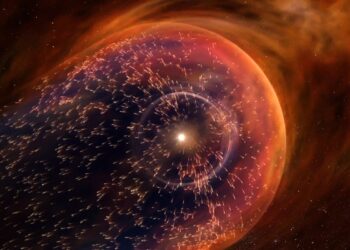The US Space Force located a tiny experimental satellite after it spent two-and-a–half decades missing in orbit. Hopefully, they’ll be able to keep an eye on it for good—unlike the last time.
The S73-7 Infra-Red Calibration Balloon (IRCB) was dead on arrival after ejecting from one of the Air Force’s largest Cold War orbital spy camera systems. Although it successfully departed the KH-9 Hexagon reconnaissance satellite about 500 miles above Earth in 1974, the S73-7 failed to inflate to its full 26-inch diameter. The malfunction prevented it from aiding ground based equipment triangulate remote sensing arrays and thus rendered it yet another hunk of space junk.
It wasn’t long afterwards that observers lost sight of the IRCB, only to once again locate the small satellite in early 1990s. And then, they managed to lose it again. Now, after another 25 years, the US Space Force’s 18th Space Defense Squadron rediscovered the experimental device.
The S73-7 satellite has been rediscovered after being untracked for 25 years. New TLEs for object 7244 started appearing on Apr 25. Congrats to whichever @18thSDS analyst made the identification. pic.twitter.com/YJOow5o4ND
— Jonathan McDowell (@planet4589) April 29, 2024
Confirmation came through a recent post on X from Jonathan McDowell, an astrophysicist at the Harvard-Smithsonian Center for Astrophysics, who offered his “congrats to whichever… analyst made the identification.”
So how does a satellite disappear for years on end not once, but twice? It’s actually much easier than you might think. As Gizmodo explained on May 1, over 27,000 objects are currently in orbit, most of which are spent rocket boosters. These, along with various satellites, don’t transmit any sort of identification back to Earth. Because of this, tracking systems must match a detected object to a satellite’s predictable orbital path in order to ID it.
[Related: Some space junk just got smacked by…
Read the full article here







